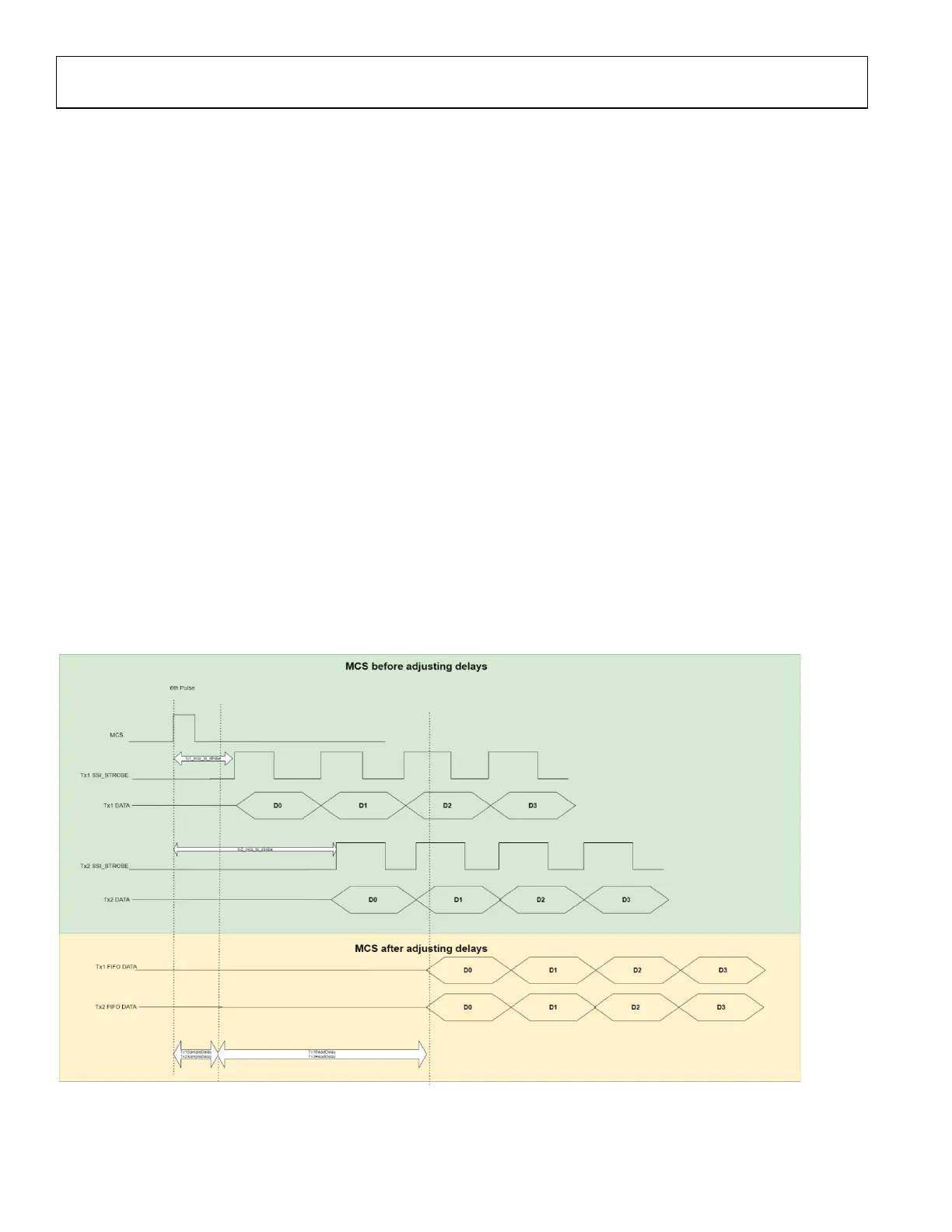UG-1828 Preliminary Technical Data
Rev. PrB | Page 92 of 277
Frequency Hopping Table Real-Time Process
If ADRV9001 is configured for real-time process, then at the Hop edge, an entry in the frequency hopping table is processed. This, along
with the use of two frequency hopping tables, gives user flexibility to load in new frequency hopping tables during frequency hopping
operation.
Example 1: Load New Frequencies with Automatic Ping Pong
In this example, shown in Figure 91, we demonstrate how new frequencies will be loaded on the fly in automatic ping pong mode.
Suppose user has already configured the frequency hopping mode to automatic ping pong mode. And table A has a single entry loaded
before frequency hopping operation. The following rising/falling edges refer to HOP signal.
24159-488
DWELL
PREPARE TABLE A
SWITCH TO ABLE B
PREPARE TABLE B
SWITCH TO TABLE A
PREPARE TABLE B
SWITCH TO TABLE A
DWELL
TRANSITION
TRANSITION
DWELL
TRANSITION
FH TABLE B FH TABLE BFH TABLE A
TABLE B LOAD TABLE B LOADTABLE A LOAD
HOP FRAME
(TABLE A)
HOP FRAME
(TABLE B)
HOP
CHANNEL SETUP
Figure 91. Example 1 Load New Frequencies with Automatic Ping Pong
• At the first rising edge, the ADRV9001 reads the hop table entry from table A (the single entry) and prepares that frequency for the
next frame. At this point, the ADRV9001 switches to table B, which currently has no frequency information. Therefore,
ADRV9001 will not read from table B yet at his point, it reads from table B at the upcoming HOP edge (the first falling edge).
• The first hop frame starts. During this frame time, BBIC will load a single entry into table B. BBIC must ensure the entry is loaded
into ADRV9001 memory prior to the next HOP edge (the first falling edge). The ADRV9001 acknowledges when the table load is
complete, so BBIC can get the acknowledgement.
• At the next HOP edge (the first falling edge), ADRV9001 reads the new entry from table B and switches to table A. This frame
(from the first falling edge to the second rising edge) uses table B entry.
• At the next HOP edge (the second rising edge), at this point BBIC can load a new frequency entry into table A. This frame (from
second rising edge to second falling edge) uses table B. And the process is repeated.
By following this process, the user can provide a new frequency on the fly to ADRV9001 at each HOP edge.
Note that the user does not need to load just a single entry. With automatic ping pong mode, user can load from 1 to 64 entries.
However, the user should ensure that the frame timing allows the amount of time required to load the table prior to the automatic
switch.

